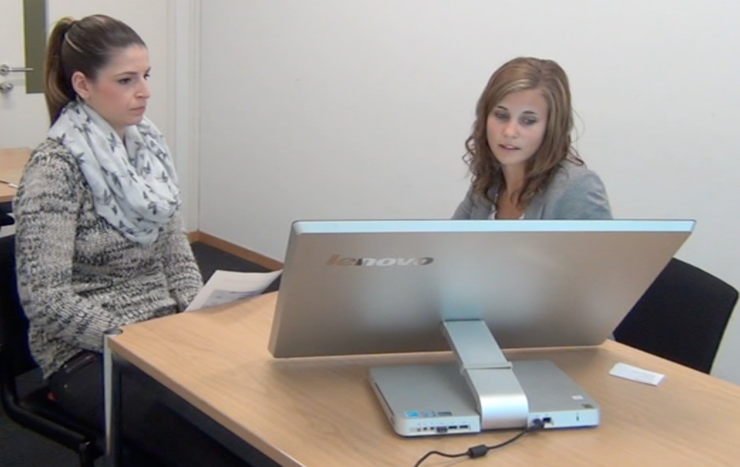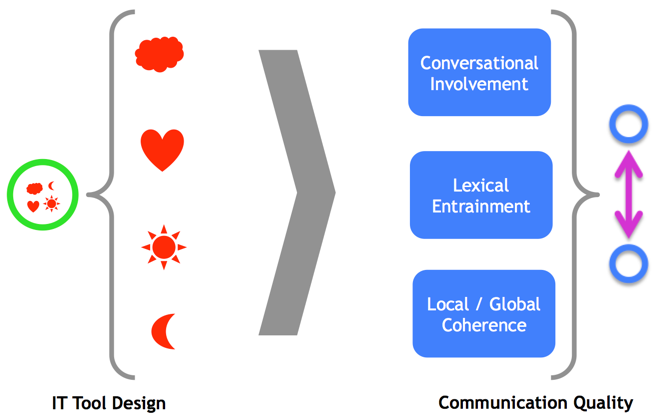Navigation auf uzh.ch
Navigation auf uzh.ch
More and more institutions use modern IT tools to support their frontline employees at advice giving. However, the influence of IT on the interpersonal communication and rapport building processes remains unclear. As we know, a sustainable customer binding is central for a successful service offering of most providers. And face-to-face encounters play a tremendous role in establishing and upholding the customer relationship and any changes made to them shall be considered with the best care and attention. This holds, in particular, for introduction of collaborative IT systems into the service encounter. With our research in the area of Communication in IT-supported Advice Giving we address exactly the highly sensitive issues of interpersonal relationship in such settings.

Already in 2008, our early research indicated that even well conceptualized and designed IT would not find its way into the advice encounters, as the advisors fear its intrusive character. They assume that an advice support system will impede the interpersonal level of communication. They are, also, afraid of situations, in which their strategies for relating with customers would fail due to the prominent position of IT. During advice giving, a successful communication shall reduce the knowledge asymmetry between the advisor and the customer, while enabling for co-creation experience to emerge.
While the IT as a whole influences the features of communication throughout the advice, so do particular design choices, such as interaction paradigms or visual metaphors. Our previous research in the area of banking advice shows that particular design decisions influence eye contact between the involved parties, their vocal participation, and even the structure of conversations. Given the broad impact of IT on the advisory service provision, we launched a research programm to deeper understand the character of those interdependencies.
To answer the question on the dependency between the design of advisory service support systems and the communication quality we employ a multidisciplinary approach while building upon natural language processing, linguistic pragmatics, and information systems. In particular, we use methods known from applied linguistics, education, and psychology research to analyze communication defined primarily through the lense of pragmatics and semiotics.

In the first step, we identify design choices implemented in the considered advisory service support system. To describe the artifact’s purpose, goal, principles of form, and principles of function, we analyse its characteristics, such as: visual representations, interaction metaphors, form, data structures, embedment in the social context, and usability.
Second, given the video recordings of the situations in which the tool is used in realistic setting, we make use of multimodal coding as a method to gather data describing the quality of communication. In particular, we focus on the following cues: eye gaze, voice pitch, gesture, body posture, and tool use. Moreover, we transcribe the audio to enable for extensive analysis of the verbal communication, including observations on vocabulary and other discourse features.
Subsequently, the collected data is used to analyse the communication quality. We define it with use of the following factors:
Finally, we process the data statistically and conduct thorough analysis to obtain valid and reliable results - they show how the IT and its particular design elements influence features of communication quality. In doing so, we aim at making contribution to the scientific progress in the fields of computer supported cooperative work and information systems.
| |
In parallel, we aim at providing insights useful for improvement of face-to-face service encounters and for the development of dedicated support systems. We simplified our research method to make it easily applicable for the assessment of respective IT systems applied in practice or being still in development. For more details, have a look at our flyer in
or in